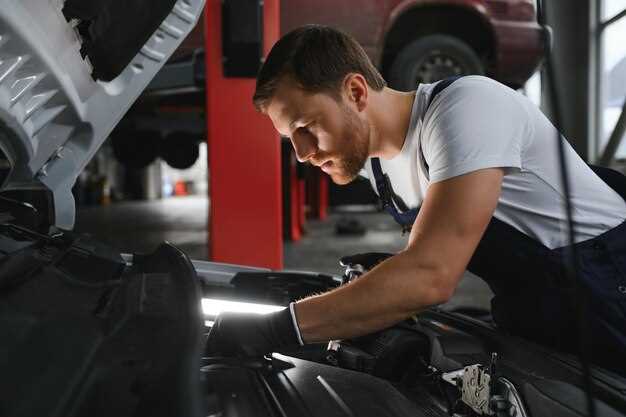
Routine Maintenance for Race Cars

Maintaining the optimal performance of a race car is not just about speed on the track; it’s a combination of precise engineering and regular maintenance. Each component of the car plays a crucial role in its abilities, whether it’s in tackling sharp turns or achieving maximum acceleration. Therefore, adopting a consistent maintenance routine is essential for any racer looking to stay competitive.
Regular inspections are fundamental in identifying potential issues before they escalate into serious problems. Key areas such as the engine, suspension, and tires require frequent checks to ensure they are in peak condition. For instance, a well-maintained engine can significantly enhance horsepower and torque, contributing to better overall performance on the racetrack.
Additionally, keeping an eye on fluid levels is vital for a race car’s longevity and efficiency. Fluids like oil, coolant, and brake fluid should be checked regularly, as they directly impact the car’s mechanical integrity and safety. Neglecting these maintenance tasks can lead to catastrophic failures, particularly at high speeds.
Overall, a disciplined approach to maintenance not only prolongs the life of a race car but also guarantees that it delivers the performance needed to compete at the highest levels. By implementing these routine maintenance tips, racers can ensure that their cars are always ready to deliver their best on the track.
Regular Tire Inspection and Pressure Adjustment

Maintaining optimal tire condition is crucial for enhancing race car performance. Regular tire inspections should include checking for any visible damage, such as cuts, punctures, or uneven wear. These signs may indicate alignment issues, incorrect pressure, or suspension problems that require attention. Regular maintenance of tires contributes significantly to handling and stability on the track.
Pressure adjustment is a vital aspect of tire maintenance. Proper tire pressure ensures maximum contact with the road, improving grip and traction. Under-inflated tires can lead to excessive wear and reduced responsiveness, while over-inflated tires might compromise performance and safety. It’s recommended to check tire pressure before every race and adjust according to the specifications provided by the manufacturer.
A well-maintained tire not only enhances speed but also prolongs tire life, reducing the frequency of replacements. Maintaining correct inflation levels can also improve fuel efficiency, providing an added advantage during races. Therefore, diligent attention to tire inspection and pressure adjustment is essential for achieving peak performance in race cars.
Engine Oil Change Frequency and Quality Selection
For optimal race car performance, regular engine oil changes are crucial. The frequency of oil changes largely depends on the type of racing, engine design, and oil quality. Generally, high-performance engines used in competitive racing require more frequent oil changes compared to standard vehicles. It is advisable to change the oil every 3,000 to 5,000 miles or after a specific number of racing hours, often around 10 to 15 hours of usage.
Quality selection of engine oil plays a significant role in ensuring engine efficiency and longevity. Synthetic oils are recommended for racing as they provide superior protection against high temperatures and shear, which are common in high-stress situations. Additionally, they maintain viscosity levels better than conventional oils, allowing for stable performance under extreme conditions.
Be sure to choose an oil that meets or exceeds the specifications required by your engine manufacturer. Look for oils that include performance ratings such as API or SAE standards. The right engine oil reduces friction, minimizes wear, and improves overall maintenance efficiency, ensuring your race car remains competitive on the track.
Brake System Checks and Upgrades for Optimal Safety

For race car enthusiasts, ensuring a robust and efficient brake system is crucial for both performance and safety. Regular checks of brake pads, rotors, brake fluid, and the overall system are essential to maintain optimal functionality and prevent failures during races.
Start by inspecting the brake pads for wear and tear. If the pads are worn down to the indicator line or below, it’s time for a replacement. High-performance race pads are designed to handle extreme temperatures and provide better grip. Upgrading to ceramic or metallic pads can enhance stopping power, especially in high-speed situations.
Next, evaluate the brake rotors. Look for signs of warping or cracking, which can compromise braking efficiency. Consider upgrading to slotted or drilled rotors, as these designs improve heat dissipation and reduce brake fade during intense racing conditions.
Regularly check the brake fluid level and its condition. Brake fluid can absorb moisture over time, leading to decreased performance and increased risk of brake failure. Flushing the old fluid and replacing it with a high-performance, moisture-resistant fluid is a wise upgrade for race cars.
Examine the brake lines for any signs of wear, leaks, or damage. Stainless steel braided lines can significantly improve the system’s responsiveness and durability compared to rubber lines. Upgrading the lines not only enhances performance but also increases safety by reducing the risk of brake failure.
Don’t forget to test the entire brake system regularly. A comprehensive check should include evaluating the master cylinder and calipers for any signs of malfunction. Ensuring that all components are functioning correctly is vital to maintaining control on the track.
In conclusion, consistent brake system checks and thoughtful upgrades are imperative for maximizing safety and performance in race cars. Investing time and resources into this critical system can make the difference between a successful race and a dangerous situation.


















